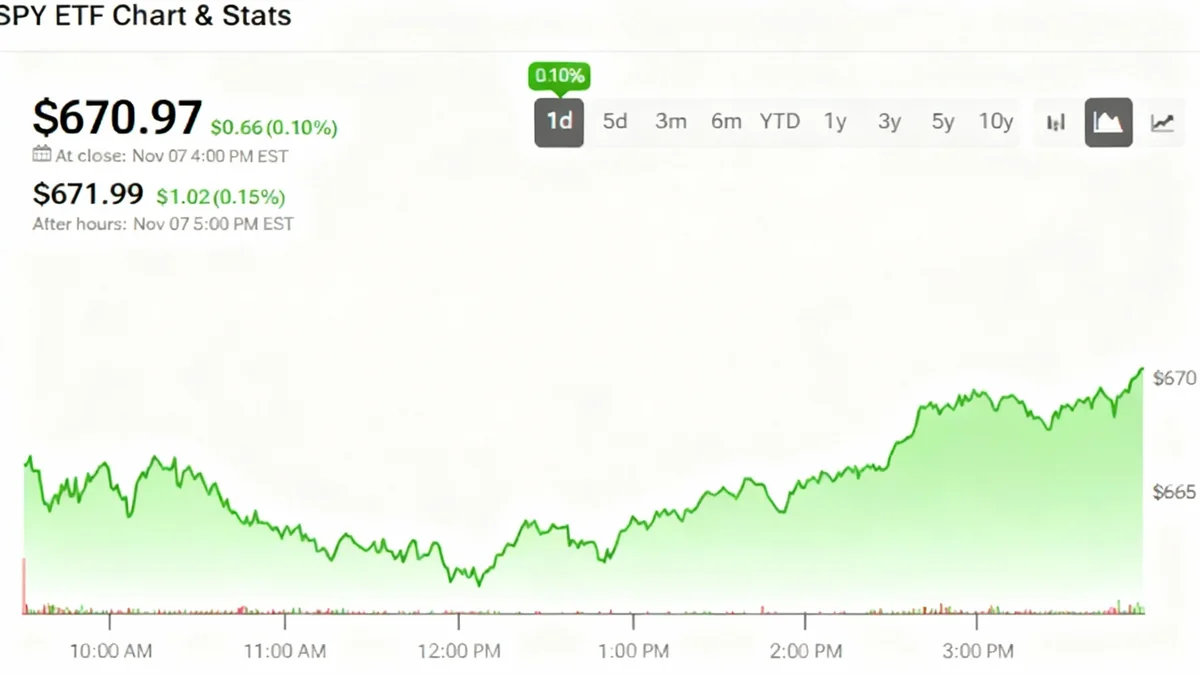Global financial markets are in a holding pattern as investors await critical inflation data and key speeches from central bank officials. This period of anticipation is creating a tense calm across equities, commodities, and currency markets, with traders positioned for potential volatility later in the week.
The U.S. Dollar Index (DXY) is holding steady, reflecting broad market uncertainty ahead of remarks from European Central Bank President Christine Lagarde and Federal Reserve Governor Christopher Waller. These speeches are expected to provide clues on the future path of monetary policy, a key driver for asset prices worldwide.
Key Takeaways
- Financial markets are experiencing low volatility as traders await crucial U.S. inflation data (CPI).
- The U.S. Dollar is stable, but currency pairs like EUR/USD and GBP/USD show cautious positioning.
- Precious metals, including gold and silver, have paused their rally, sensitive to upcoming economic indicators.
- Energy markets are divided, with crude oil showing weakness while natural gas prices demonstrate resilience.
- U.S. stock indices like the Dow Jones and Nasdaq 100 have seen gains, partly influenced by a weaker Japanese Yen and hopes for Fed rate cuts.
Currency Markets on High Alert
The foreign exchange market is a clear indicator of the current wait-and-see approach. The U.S. Dollar Index, which measures the greenback against a basket of major currencies, has shown minimal movement. This stability masks underlying tension as traders are reluctant to take large positions before gaining more clarity on the Federal Reserve's intentions.
Speeches from influential figures like Governor Waller are scrutinized for any hint of a shift in the Fed's stance on inflation and interest rates. Similarly, President Lagarde's comments will be pivotal for the direction of the EUR/USD pair, one of the world's most traded currency pairings.
Pound Sterling Shows Resilience
Interestingly, the British Pound has demonstrated some strength despite recent weak economic data from the UK. The currency's performance suggests that traders may be looking past short-term domestic concerns and focusing more on the global macroeconomic picture, particularly the relative policy positions of the Bank of England versus the U.S. Federal Reserve.
However, the GBP/USD pair remains sensitive to shifts in U.S. dollar sentiment, making the upcoming U.S. Consumer Price Index (CPI) data a critical event for the pound's near-term trajectory.
Why CPI Data Matters
The Consumer Price Index (CPI) is a primary measure of inflation. Central banks, like the Federal Reserve, use this data to guide their monetary policy. A higher-than-expected CPI reading could delay potential interest rate cuts, strengthening the dollar and putting pressure on assets like stocks and gold. Conversely, a lower reading could accelerate expectations for rate cuts, weakening the dollar and boosting other markets.
Commodities Pause as Investors Weigh Fed's Next Move
The commodities sector is also feeling the effects of market anticipation. Gold and silver, which recently enjoyed significant rallies, have seen their momentum stall. Precious metals are highly sensitive to interest rate expectations and the strength of the U.S. dollar.
Investors often flock to gold as a hedge against inflation and economic uncertainty. However, when interest rates are high, non-yielding assets like gold become less attractive compared to bonds that offer regular interest payments. Therefore, the upcoming CPI report is a major catalyst for the precious metals market.
"The rally in gold has been fueled by expectations of impending Fed rate cuts. Any data that challenges that narrative could trigger a significant price correction as traders reassess their positions."
A strong inflation report could push back the timeline for rate cuts, potentially ending what some analysts have called a "FOMO rally" in gold and leading to a pullback in prices.
Divergence in Energy Markets
The energy sector presents a more complex picture. Crude oil prices have shown signs of weakness, influenced by concerns over global demand and geopolitical factors. Both Brent and WTI crude benchmarks are under pressure as traders evaluate the balance between supply and consumption.
In contrast, natural gas has defied broader market headwinds, showing notable price strength. This divergence highlights that while macroeconomic factors are influential, sector-specific fundamentals such as weather patterns, storage levels, and regional demand continue to play a crucial role in price discovery for individual commodities.
Key Market Indicators to Watch:
- U.S. CPI Report: The most anticipated data point for inflation insights.
- Fed Governor Waller's Speech: Scrutinized for hints on U.S. monetary policy.
- ECB President Lagarde's Speech: Key for the Euro's direction and European policy.
- U.S. Dollar Index (DXY): A barometer of market risk sentiment.
Equities Climb a Wall of Worry
While currency and commodity markets are cautious, U.S. stock indices have managed to post gains. The Dow Jones Industrial Average and the tech-heavy Nasdaq 100 have both climbed, supported by a mix of factors.
One significant influence has been the weakness of the Japanese Yen. A weaker yen can be beneficial for Japanese exporters, which in turn can have a positive ripple effect on global markets. It also influences currency-carry trades, which can impact broader market liquidity.
Furthermore, equity investors appear to be holding onto hopes that the Federal Reserve will begin cutting interest rates later this year. This optimism, combined with ongoing discussions around the U.S. election cycle, has provided a tailwind for stocks, allowing them to rise even amid the broader market's uncertainty.
Ultimately, the market's current state is one of fragile equilibrium. The calm before the storm of economic data could give way to significant price swings across all asset classes. Investors and traders are now watching the clock, waiting for the signals that will dictate the market's direction for the weeks to come.





